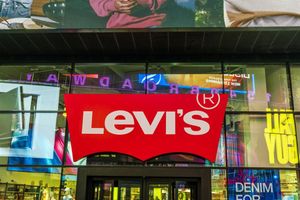
The 2024 holiday shopping season was a robust one. However, January has been nicknamed 'Returnuary' after the age-old tradition of returning products to retailers every year. The National Retail Federation (NRF) estimates a 17% return rate for all U.S. merchandise this year, which is equal to $890 billion. While this is a painful reality for retailers in the consumer discretionary sector, some companies will benefit from the mountains of returned merchandise. Here are three stocks that can gain from Returnuary.
UPS: Online Shopping Returns Still Need to Be Delivered Back
With the growth of e-commerce and online shopping, the rate of returned packages also grows.
Delivered packages, in most cases, need to be returned, and United Parcel Service Inc. (NYSE: UPS) is a benefactor of this phenomenon. The company posted Q4 2024 EPS of $2.75, beating consensus analyst estimates by 22 cents.
Revenues grew 1.5% year-over-year (YoY) to $25.3 billion, falling short of the $25.41 billion consensus estimates. Consolidated margin was 11.6% while non-GAAP adjusted consolidated operating margin was 12.3%.
Solid Q4 2024 Results, But Guidance Sinks Stock 15%
While the quarter was relatively strong, shares slid 15% on downside guidance for the full year 2025. Revenues are expected to be around $89 billion, falling short of the $95.03 billion consensus estimates. Operating margin was also lowered to around 10.8%. The small and medium-sized businesses (SMB) customers make up 28.9% of total U.S. volume, up 30 bps YoY.
50% Volume Drop From Amazon.com?
The concern stemmed from the announcement that it had reached an “agreement” with its largest customer to drop shipping volumes by 50% by the second half of 2026. CEO Carol Tome stated, “First, we've reached an agreement in principle with our largest customer for a significant reduction in volume, lowering their volume with us by more than 50% by the second half of 2026. With this, we will “right size” our network and retain the volume that is nutritive for us and our customers.” That “largest customer” is widely believed to be Amazon.com Inc. (NASDAQ: AMZN).
The 50% volume drop is what UPS wants to boost its productivity and profitability. Investors weren’t too enthused at the prospects of trimming business volumes by 50%.
The concern is that volume (and revenue) will be going to competitors or the United States Post Services (USPS). Speaking of which, UPS decided to take its SurePost service back in-house away from USPS, which it believes the changing operating model puts the service at risk. UPS shares trade at just 15.23X forward earnings and pays a hefty 5.71% annual dividend rate.
Ollie’s: One Man’s Junk Is Another Man’s Treasure
When online products get returned, a good portion of them are actually sold at deep discounts to closeout firms. Ollie’s Bargain Outlet Holdings Inc. (NASDAQ: OLLI) is a leading chain of discount closeout retail stores.
Ollie’s operates 588 stores that sell everything from houseware to sporting goods.
The company is a major purveyor of closeouts, overstocks, returned merchandise, and refurbished and irregular goods.
Younger Customers Growing While Retaining Higher Income Customers
The company posted Q3 EPS of 58 cents, beating consensus analyst estimates by a penny as revenues rose 7.8% YoY to $517.43 million versus $518.83 million.
Comp sales declined 0.5%. Ollie's issued full-year EPS of $3.22 to $3.30 versus $3.27 consensus estimates.
The negative comp sales were coming off 7% YoY comp sales growth in the year-ago quarter.
Full-year 2025 revenue is expected to be between $2.27 billion and $2.28 billion versus $2.28 billion consensus estimates.
More importantly, Ollie's indicated that it is seeing growth in its young customer demographic and retention of higher-income customers.
TJ Maxx: Some Returned Clothing and Merchandise Gets a New Home
Like Ollie’s, TJX Companies Inc. (NYSE: TJX) is a purveyor of closeouts and returned items for their off-price stores TJ Max, Marshalls, and HomeGoods. The combination of TJ Max and Marshalls, which sell off-price apparel and accessories, is reported as Marmaxx. TJX is coming off a strong 2024, dominated by the off-price trend.
Returnuary is a great time to replenish some of its inventories. However, most of TJ Max’s procurements come directly from the manufacturers before they go to the traditional retail channels. TJ Max sources significant merchandise from closeouts, liquidations, overstock, and excess inventory. They have a strict quality control process to ensure the merchandise they sell is in good condition.
Setting the Bar Lower for Q4 2024 But Not Due to Demand
TJ Max delivered strong Q3 2024 results, with EPS beating consensus estimates by 5 cents as revenues grew 6% YoY to $14.06 billion, firmly beating consensus estimates of $13.95 billion. Q3 comp store sales rose 3% YoY, and the pretax profit margin rose 30 bps to 12.3%.
However, the company issued downside guidance for Q4 EPS of $1.12 to $1.14 versus $1.18 consensus analyst estimates. Comparable store sales are expected to increase 2% to 3% YoY. The pretax profit margin is expected to be between 10.8% and 10.9%. While this may appear that demand may be weakening, the primary reason for the downshift is the expected reversal of Q3 benefits from the timing of certain expenses. The company expects to repurchase $2.25 to $2.5 billion of stock in fiscal 2025.
Where Should You Invest $1,000 Right Now?
Before you make your next trade, you'll want to hear this.
MarketBeat keeps track of Wall Street's top-rated and best performing research analysts and the stocks they recommend to their clients on a daily basis.
Our team has identified the five stocks that top analysts are quietly whispering to their clients to buy now before the broader market catches on... and none of the big name stocks were on the list.
They believe these five stocks are the five best companies for investors to buy now...






